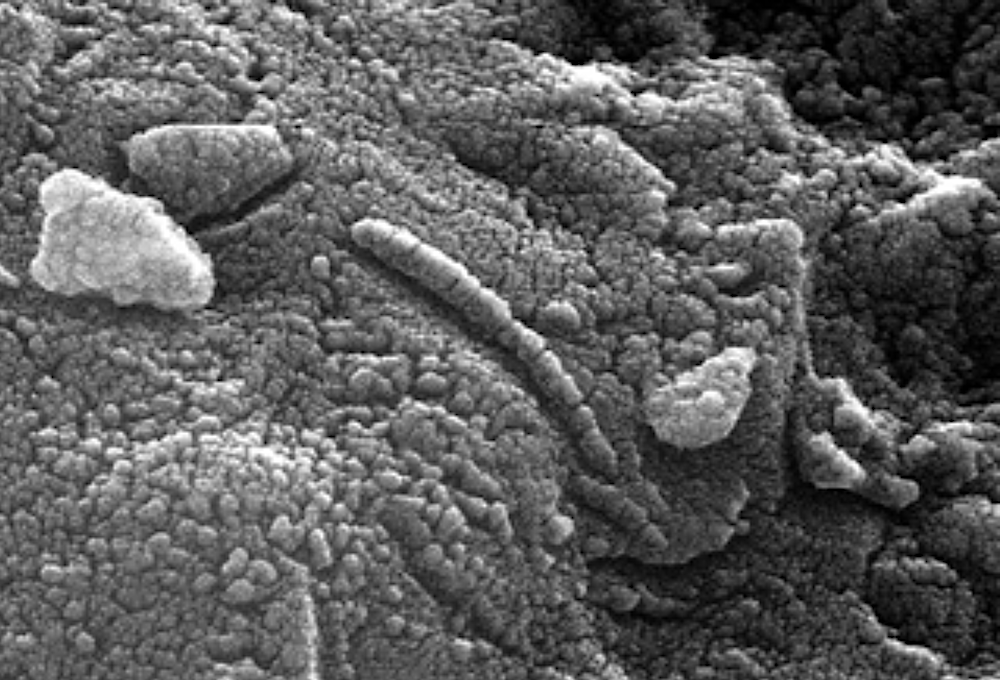The Search for Life

Editor’s Note: This is the 12th in a series of essays on exploration by NASA’s Chief Historian, Steven J. Dick.
Why do we explore? As this essay series suggests, there are many answers. But since the beginning of the Space Age one of the chief drivers has been the search for life beyond Earth. Already in 1962 the Space Science Board of the National Academy of Sciences declared the search for extraterrestrial life as the prime goal of NASA’s nascent space biology efforts. In doing so they realized not only the scientific but also the philosophical import of what was just beginning to be called “exobiology”: “It is not since Darwin – and before him Copernicus – that science has had the opportunity for so great an impact of man’s understanding of man.” Taking a long view, the Board found the question of life the most profound issue in the history of Western thought since modern science began with the Scientific Revolution 300 years ago.
NASA took this sentiment to heart with a series of missions and research efforts that continue to this day. In this endeavor Mars has been the focus of attention – the planet of imagination featured in H. G. Wells’ War of the Worlds and Ray Bradbury’s Martian Chronicles, and the planet that a century ago Pervical Lowell declared full of canals built by a dying civilization. The Mariner 4 spacecraft in 1965 first revealed a Moon-like Mars full of craters, dashing hopes for life. By 1972 Mariner 9 revealed a different side of Mars: a panoply of geological features, including meandering channels that appeared to be dry riverbeds. Hopes for life were raised, at least past life or possibly microbial life.

Image: With a range of 13,600 km and a sun angle of 29 degrees from zenith, this Mariner 4 image was the first picture showing unambiguous craters on the surface of Mars. The area, 262 x 310 km, is a heavily cratered region south of Amazonis Planitia, centered at 14 S, 174 W. North is at about 11:00. (Mariner 4, frame 07B). Photo credit: NASA.
This was the situation when in 1976, on the bicentennial of the United States, the two Viking landers set down on the surface of Mars. In one of the great exploratory missions of all time, these robotic surrogates, now representing humans “on Mars” for the first time in history, returned reams of scientific data, including the results of three biology experiments. The results of the biology experiments were open to interpretation, and one of the principal investigators (Gilbert Levin) still claims that his experiment found evidence of life, a case he and his colleagues make in their book Mars: The Living Planet. But an experiment known as the “gas chromatograph mass spectrometer” (GCMS) found no evidence of organic molecules down to parts per billion.
Without organic molecules, the building blocks of life, life cannot exist. The scientific consensus is that the Viking experiments did not prove the existence of life on Mars, although the sensitivity of the GCMS is still open to interpretation. Another of the Viking biology principal investigators, Norman Horowitz (who died last month at the age of 90), believed that his failure to find life on Mars justified a much broader conclusion: “Since Mars offered by far the most promising habitat for extraterrestrial life in the solar system, it is now virtually certain that the Earth is the only life-bearing planet in our region of the galaxy. We have awakened from a dream.” That conclusion, found in his book To Utopia and Back, is one that most would agree is too general based on what we know about one nearby planet.
Without organic molecules, the building blocks of life, life cannot exist.

Microscope image of Martian meteorite ALH84001 — NASA
Mars held many more surprises after Viking, one of which – the surprising claim in 1996 of small fossils in the Martian meteorite ALH84001 – we will examine in another essay. In terms of the exploration of Mars by spacecraft, after a twenty years hiatus, and some failed attempts, the Pathfinder bounced to a landing on Mars in 1997. It carried no life detection experiments, but returned a raft of science data ranging from Martian geochemistry to meteorology. In 2001 Mars Global Surveyor revealed numerous gullies on Martian cliffs and crater walls, and evidence of geologically recent liquid water. In 2002 Mars Odyssey gave strong evidence that large quantities of water were present within three feet of the surface of Mars at latitudes from the south pole to 60 degrees south. In 2004 the European Mars Express Orbiter returned data indicating the presence of methane in the Martian atmosphere, possibly of biogenic origin.

Noachis Gullies on Mars — NASA
Meanwhile, Opportunity, one of the Mars Exploration Rovers that began operations in 2004 and still crawling around Mars today with its companion Spirit rover, examined an outcrop of salt-laden sediment and found thin intersecting layers interpreted as sand ripples, perhaps shaped by flowing water in a huge shallow sea. What these spacecraft reveal is evidence of past, and perhaps even present, water on Mars. And where there is water there may be, or may have been, life.
In a surprising turn of events, some scientists think the solar system now has even more potential for life than it did 30 years ago. In 1996, just after the possible Mars fossil was announced, the Galileo spacecraft confirmed what Voyager 2 hinted at already in 1979: that the Jovian moon Europa harbored an ocean. Not even Arthur C. Clarke’s science fiction had dreamed of this scenario when NASA’s exobiology program began in the early 1960s, though Clarke did broach Europa in his novel 2010.
Will we find microbial or fossilized life on Mars? Will there be life in the oceans of Europa or one of the other water moons of Jupiter? Or will we have to search the atmosphere of another planet beyond our solar system to find other worlds with signs of life? These questions, and many more, are the subject of intense research in the field now known as astrobiology, led by the 16 teams of NASA’s Astrobiology Institute and affiliates around the world.
Mariner, Viking, Mars Odyssey, Mars Global Surveyor, Mars Express, the Mars Exploration Rovers and their successors constitute a scientific detective story full of mystery, laden with importance, and resonating with history. In short, a positive venture in the best tradition of exploration, for the United States and for humanity at large.
Further Readings:
Bergreen, Laurence. Voyage to Mars: NASA’s Search for Life Beyond Earth (Riverhead Books: New York, 2000).
Ezell, Edward C. and Ezell, Linda, On Mars: Exploration of the Red Planet, 1958-1978 (NASA SP 4212: Washington, D.C, 1984).
Horowitz, Norman. To Utopia and Back: The Search for Life in the Solar System (W.H. Freeman: New York, 1986).
Steven J. Dick and James E. Strick: The Living Universe: NASA and the Development of Astrobiology (Rutgers University Press: New Brunswick, N.J. and London, 2004).
Steven J. Dick, Life on Other Worlds: The Twentieth Century Extraterrestrial Life Debate (Cambridge University Press: Cambridge and New York, 1998).
Astrobiology








